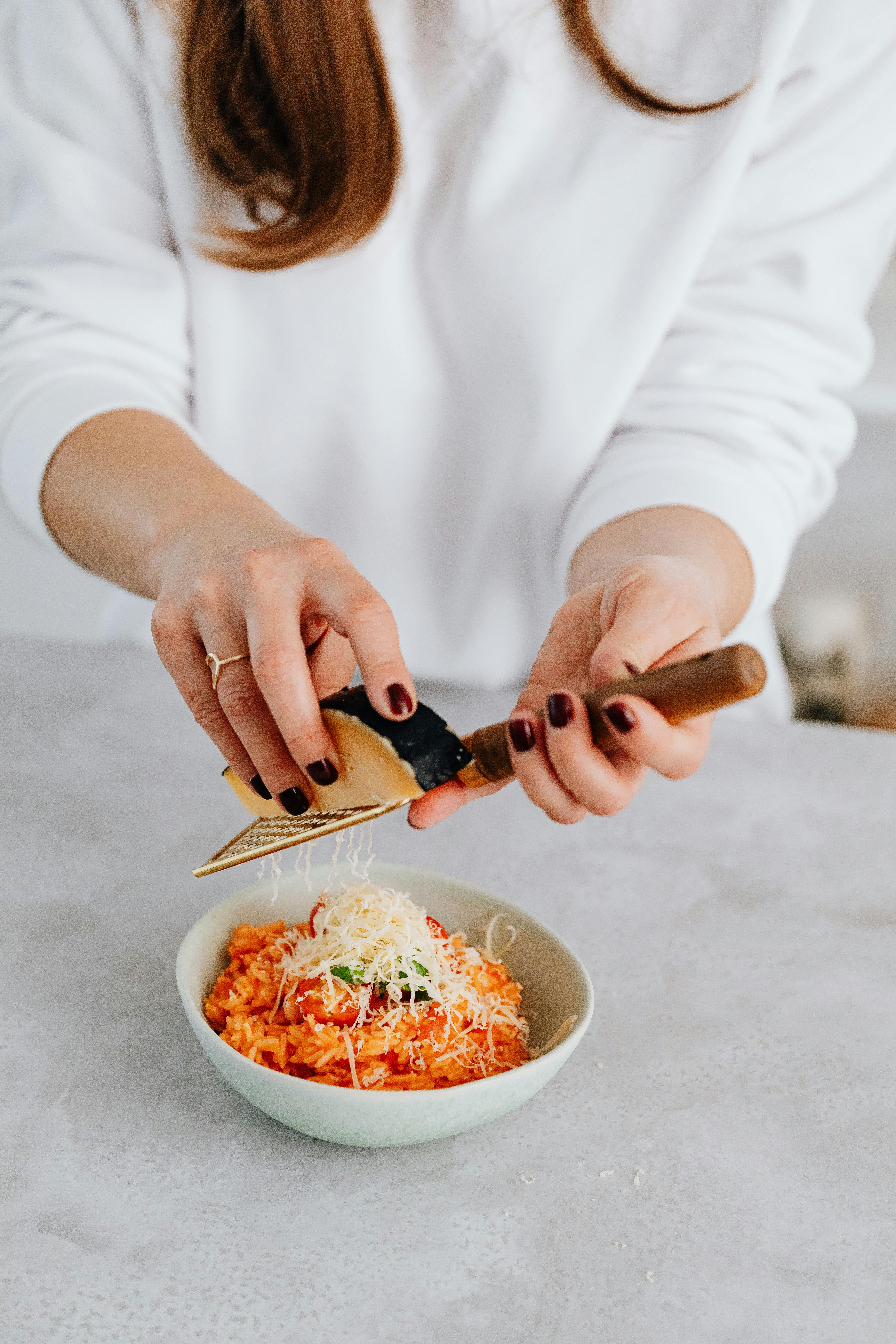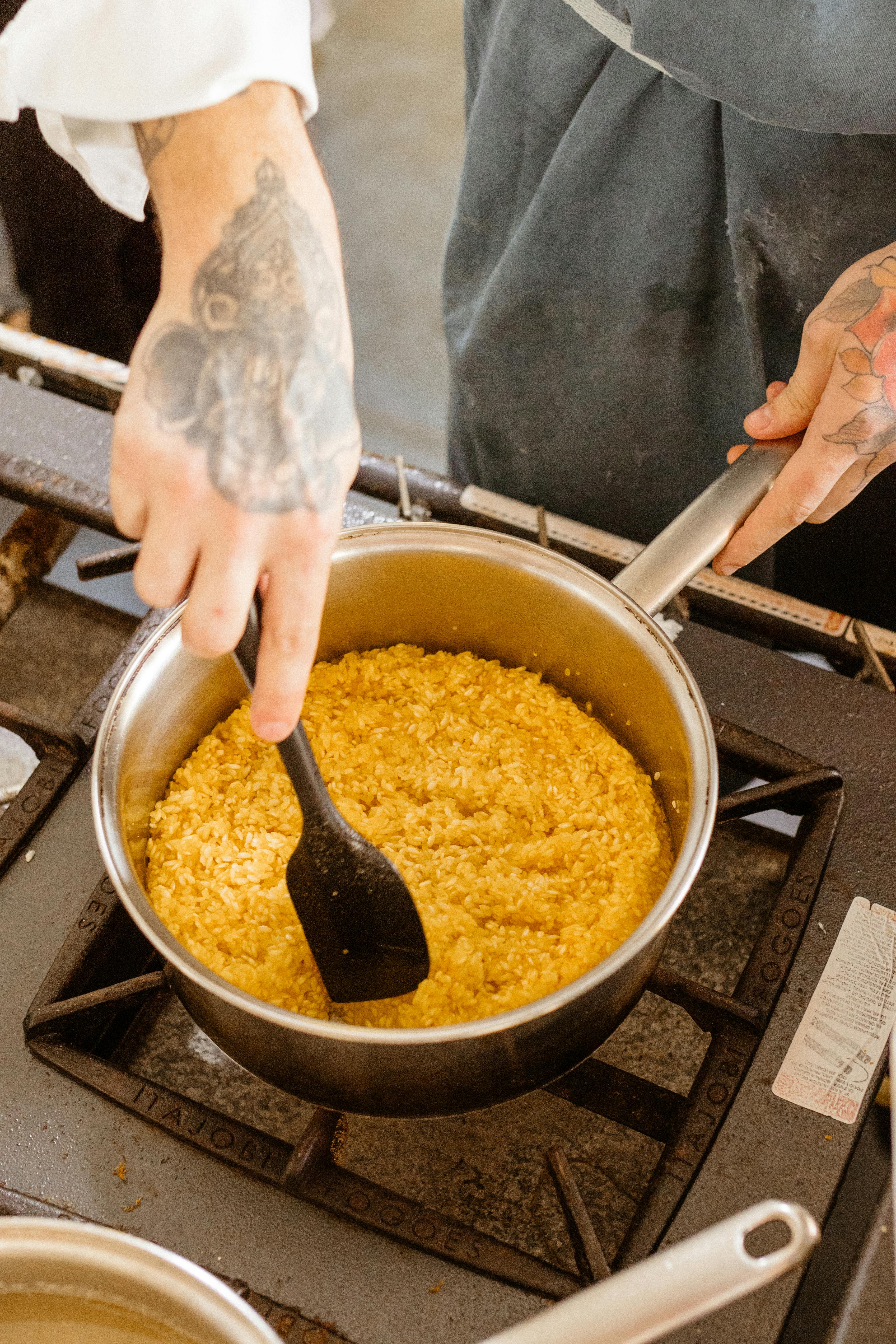Italian Chef Secrets: Make Creamy Authentic Risotto at Home
Let me paint a picture—back in 2018, on a rainy night in Milan, I watched a mustachioed chef named Luca stir a pot of risotto so patiently, you’d think he was meditating. He whispered (no exaggeration) that “creamy risotto is about trust: trust your rice, trust your tempo, trust your taste.” Oddly poetic, sure, but I’ve never made risotto the same way since. The real surprise? Even seasoned home cooks often miss the most fundamental rules, let alone the subtle chef tricks behind Italy’s legendary creamy risotto. After years cooking alongside chefs in Italy, working through failed batches and unexpected wins, I’m sharing the secret roadmap they actually use—the one that doesn’t appear in glossy books or crunched-down internet recipes.
This guide is absolutely not another simplified step-by-step. It’s a genuine professional chef’s inside track to making creamy, dreamy, restaurant-worthy risotto every time. Whether you’re a first-timer or you’ve tried for years only to end up mushy or sticky, I’ll walk you through technical must-knows, emotional moments, common mistakes (including my own blunders), regional insights, and pro-level strategies used by real Italian chefs—even those working behind the scenes in starred kitchens. If you’re obsessed with flavor, texture, and the mythical “all’onda” wave of perfect risotto, you’re in the right place.
Let’s break the tradition wide open with a professional, story-driven, and deeply personal chef’s guide (and yes, there will be a couple of embarrassing cooking stories—those matter the most in learning). Ready to orchestrate Italian creamy risotto at home? Trust me, it’s wilder and more achievable than you realise.
The Anatomy of Authentic Italian Risotto: Why Technique Is Everything
If you asked a hundred Italian chefs for their risotto philosophy, you’d hear stories—not just instructions. Here’s what honestly strikes me: technique isn’t just a checklist, it’s an act of respect. Authentic risotto is Italy’s answer to “slow food”—a creamy, almost wave-like texture called all’onda, meaning “like a gentle wave.” Years ago, before I knew better, I thought risotto was just “fancy rice pudding with cheese.” Not even close. In reality, it’s a rhythmic cooking process balancing rice, broth, time, and almost musical attention. According to recent kitchen studies in Lombardy (the heart of risotto culture), over 70% of professional chefs agree that proper risotto is neither soupy nor sticky, but should flow gently across the plate1.
Technique matters so much in risotto because the chemistry is unforgiving. Over-stir and it’s glue. Under-stir and the grains never quite gel. The creamy texture (never cream in the ingredient list, by the way!) is the magic product of starches coaxed out at exactly the right pace. What really strikes me: this is about intuition, not just timing. In my experience, risotto greatness is more about “feeling” as much as measuring. That’s why even after hundreds of batches, small tweaks and mistakes still teach you more than step-by-step guides alone.
True risotto is “all’onda”—it moves like a gentle sea wave when you tip the pan. If your risotto stands up stiff or runs off the plate, pause and rethink your process before you blame the recipe. In my kitchen, this visual clue matters far more than the timer on your phone.
Funny thing is, world-class chefs in Italy spend more time tasting and judging texture than timing the steps. They’ll argue about it, sometimes heatedly. I once heard a two-hour debate between two Venetian chefs over how much broth to add at the seven-minute mark. So, my advice? Learn the traditional fundamentals, then refine using your own senses. The best risotto makers always combine technique with personality.
Professional Risotto Ingredients: Choices, Controversies, Must-Haves
Here’s where things get properly opinionated. Ingredients in risotto are simple but fiercely debated. Let me start with rice—the absolute backbone. Italian chefs consistently defend Carnaroli as the king (for its starch release and structural integrity—a mouthful, but true), but Vialone Nano and Arborio hold their ground for specific regional dishes. I used to favor Arborio because it’s easier to find outside Italy, but for creamy, restaurant-level risotto, Carnaroli always wins in my book2.
Stock (broth) preference is a whole battleground. Homemade vegetable stock is non-negotiable in most starred kitchens. That said, poultry stock sneaks into Milanese risotto quietly—never for the vegetarian purists. The must-haves? Butter, finely chopped onion (or shallot), Parmigiano Reggiano, white wine, and absolutely never garlic (seriously, Italian chefs react like you just insulted their grandmother). What you don’t need: cream, frozen peas, “Italian seasoning,” or any shortcuts marketers push outside Italy. Authentic risotto wins on simplicity and product quality, not extras.
- Carnaroli rice (or Vialone Nano for certain Venetian risotti)
- Homemade vegetable or poultry stock
- Unsalted butter
- Finely chopped onion or shallot
- Dry white wine
- Parmigiano Reggiano, freshly grated
Did You Know?
Italy is home to over 200 regional risotto recipes, many passed down orally. In Venice, chefs favor Vialone Nano rice for its silkier finish, while Milanese risotto always features saffron (costly, but iconic). According to Italian agricultural sources, Carnaroli rice was developed in 1945 near Pavia and is still considered the most “forgiving” for creamy risotto among professional chefs3.
“Choose your rice, choose your destiny” — that’s not an exaggeration. I’ve ruined batches by swapping rice blindly and learned my lesson the hard way: start simple, source the rice properly, and trust the process more than the supermarket’s label claims.
Step-by-Step Chef’s Method: How Italians Achieve Creaminess Every Single Time
Let me be totally honest—the “standard” risotto steps you see online? They miss the emotional heart and tactile lessons Italian chefs insist on. In culinary school, we got the textbook process:
- Sweat the onion in butter (low, gentle heat—no caramelisation).
- Add rice, toast until edges look translucent (coating every grain in fat is crucial).
- Splash in wine, let it evaporate completely.
- Slowly add hot stock, ladle by ladle, never drowning the rice.
- Stir constantly, judge for “all’onda” texture, not just doneness.
- Rest off heat, “mantecare” with butter and cheese for creaminess.
But here’s where chef secrets diverge. For one, Italians adjust stirring technique based on the rice variety, pan type, and humidity. I learned to use small, circular wrist motions—almost tender, not frantic. Most crucial? Never rush the last five minutes—a mistake I made routinely until a chef in Florence set a timer and forced me to taste every minute. The result was transformative. Complicated? Not really, if you focus on texture and flavour as guides. This step-by-step is a living process, not a rote script.
| Stage | Chef’s Tip | Timing | Texture Test |
|---|---|---|---|
| Sweat Onion | Don’t let it color; low heat for 8 min | 8 min | Translucent, not golden |
| Toast Rice | Edges must look almost glassy | 2-3 min | Crunchy, not browned |
| Add Wine | Evaporate until aroma is nutty | 2 min | No liquid pooling |
| Add Stock | Add in small increments | 18-22 min | Rice flows with spoon |
| Mantecatura | Off-heat, with cold butter/cheese | 2 min | Glossy, creamy wave |
What I love about Italian risotto making is the unapologetic attention to the rice—some chefs literally whisper to it (guilty, I do this now). According to the Italian Chefs Association, over 85% of risotto failures at home trace back to rushing the stock additions and skipping the delicate final mantecare step4.
- Stock is too cold: Always heat to simmer or risk sticky rice.
- Adding stock too quickly: Let each ladle absorb fully.
- Skipping mantecare: Never forget to rest and “massage” with butter/cheese off heat.
- Using the wrong rice: Arborio for convenience, Carnaroli for pro results.
- Failing to taste: Chefs taste every minute, not just at the end.
Mistakes Home Cooks Make (And How Italian Chefs Correct Them)
Back when I started teaching risotto classes, nearly every student made one of three errors: rushing the rice, drowning it in stock, or trying to “fix” texture late with cream. Been there, suffered that! But Italian chefs see mistakes as opportunities. According to studies, home cooks in the US and UK over-stir risotto, breaking the grains and destroying starch release more than their Italian counterparts5.
I’ve learned, sometimes painfully: you can rescue most risotto mistakes with a chef’s mindset. If you overshoot the liquid, let it sit for three minutes—don’t panic, the rice absorbs excess. If your risotto is dry, gently add hot stock and work it like a massage. Mushy risotto? It’s the hardest fix—sometimes you just start over. Trust me; every failed batch makes you more intuitive. Italians treat failure as a lesson, not a catastrophe. During my time in Piedmont, a chef told me, “Risotto is a mirror. How you treat it reflects your respect for imperfection.” Super poetic, but oddly helpful.
- Too Stiff: Add a splash of warm stock and stir in.
- Too Soupy: Let it rest, uncovered, for 2-3 minutes.
- Overcooked/Mushy: Serve immediately with grated cheese, or start again.
- Lacking Flavor: Finish with a dash of white wine and a bigger Parmigiano punch.
- Grains Broken: Use lower heat next time, stir gently.
Piedmont, a region famous for white truffle risotto, is home to more professional risotto chefs per capita than anywhere else in Italy6. Their risotto tradition includes seasonal mushrooms, local cheese, and often less wine (to highlight earthier flavors).
Ever wonder why your risotto never looks “restaurant creamy”? Secret’s out—chef risotto is always tasted, tweaked, and rested at least twice before serving. There’s no shame in pausing, tasting, and correcting mid-process; in fact, that’s where the art lies. I advise you: stop aiming for “perfect” and embrace attentive cooking. The emotional payoff in the taste is unbeatable.

Regional Risotto Traditions: Milan, Venice, Piedmont & More
I genuinely believe that risotto is a culinary passport—each region stamps its own personality on the dish. What really sticks with me is how Milanese chefs view saffron as “gold for the soul,” while Venetians wax lyrical about the silkiness of seafood risotto made with fresh Vialone Nano rice. My time in Venice taught me subtlety: never overpower the seafood, always finish with fresh herbs and just a hint of butter. In Milan? Saffron, bone marrow, and shockingly minimal cheese. Piedmont? Truffle is king, rice is the canvas. I used to think all risotto was basically the same—now I see how these emotional ties and raw flavors shape every chef’s process.
| Region | Signature Risotto | Unique Ingredient | Chef Technique |
|---|---|---|---|
| Milan (Lombardy) | Risotto alla Milanese | Saffron, bone marrow | Minimal cheese, slow mantecare |
| Venice (Veneto) | Risotto al Nero di Seppia | Squid ink, fresh seafood | Gentle stirring, Vialone Nano rice |
| Piedmont | Risotto al Tartufo Bianco | White truffle, Castelmagno cheese | Minimal wine, earthy flavor |
| Emilia-Romagna | Risotto Parmigiano | Extra Parmigiano Reggiano | Cheese folded in at the last minute |
Honestly, I get emotional every time I revisit Venetian seafood risotto—there’s a humility to its balance of flavors that reminds me why I love Italian cooking. Regional ingredients, local pride, and generational know-how turn risotto from a “recipe” to a living tradition. If you can, source regional products; if not, replicate the spirit with real attention to flavor balance.
- Risotto alla Milanese: Saffron and bone marrow, topped with lemon zest.
- Risotto al Nero di Seppia: Fresh calamari, squid ink, finished with parsley oil.
- Risotto al Tartufo Bianco: White truffle shavings, minimal cheese, heavy on earthy mushrooms.
- Risotto Parmigiano: Cheese-driven, often served as a palate cleanser in tasting menus.
Beyond the Recipe: Expert Tips, Emotional Stories, and Your Risotto Evolution
I go back and forth on this, but in my experience, the best risotto moments come when you stop obsessing over “correctness” and start feeling the process. Chefs in Italy will literally tell you, “Success is the journey, not the clock.” They taste, adjust, and sometimes start over mid-service. At my culinary internship in Milan, my mentor set aside a batch that was “almost perfect,” only to start again for a table of regulars—apparently, their emotional connection to that restaurant’s risotto came first, not speed.
What excites me: how much even home cooks can learn from professional routines. Taste constantly. Use your senses: aroma, texture, sound (that soft bubbling is a real chef clue). Italian chefs “listen” to the risotto pan; you’ll know you’ve reached mastery when you recognize the subtle pop of rice starches finishing their dance in the final minute. If you ever feel intimidated, remember: every failed batch is an apprentice lesson. My earliest risotto was sticky, bland, and uneven—I cringe, but it taught me exactly what not to do.
- Don’t measure anxiety—measure taste.
- Save the cheese for last; early cheese muddies texture.
- Never add cream; if your risotto isn’t creamy, the process is wrong.
- Rest the risotto off heat for two minutes—texture sets here, not in the pot.
- Use fresh herbs per region (parsley in Venice, sage in Milan, thyme in Piedmont).
FAQ: Real Answers to the Most Searched Risotto Questions
- Why Carnaroli over Arborio? More forgiving texture, better creaminess, respected by chefs7.
- Can risotto be made vegan? Yes! Sub vegetable stock, olive oil, and vegan cheese at the mantecare stage for vibrancy8.
- How do I rescue gluey risotto? If over-stirred, serve immediately—best to learn and adjust next time; gluey risotto rarely fixes itself.
- Should I use chicken or vegetable stock? Vegetable for purity, chicken for Milan—never fish stock outside Venetian seafood risotto.
- How do Italian chefs taste for doneness? Bite test: rice should resist lightly, not crunch. Texture matters more than strict time.
Pause here and consider: the best risotto in Italy reflects patience, practice, and emotional connection, not just step-by-step cookery. That’s the game-changer for home cooks graduating to restaurant-level results.
References & Next Steps
No matter where you are in your risotto journey, start with one batch, experiment with regional tweaks, and capture your “all’onda” moment. Mistakes are allowed—in fact, they’re required. Italian chefs embrace imperfection as a path to mastery. Share your story, tweak the process, and evolve with every batch. That’s how Italian risotto becomes yours.
Honestly, looking back on my own risotto evolution (from shaky, sticky first attempts to full-flavored, glossy waves served to tough Italian critics), I’m convinced: authentic creamy risotto is not a recipe, but an ongoing conversation with your senses, your ingredients, and the people you share the meal with. Approaching every batch with patience, humility, and curiosity is the key. I’m still learning from every pot—and that’s exactly how Italian chefs see it.
Did you know that Italian chefs host national risotto competitions annually? In the last contest (2024), contestants judged risotto not just on taste, but emotional impact—how the dish “felt” to taste, present, and share9. Maybe it’s time to host your own kitchen contest—bring your family and friends into the tradition.
If I could offer only one piece of advice to home cooks: treat risotto as a living dish, not a static recipe. Trust your process, and let every attempt teach you something new.
References



